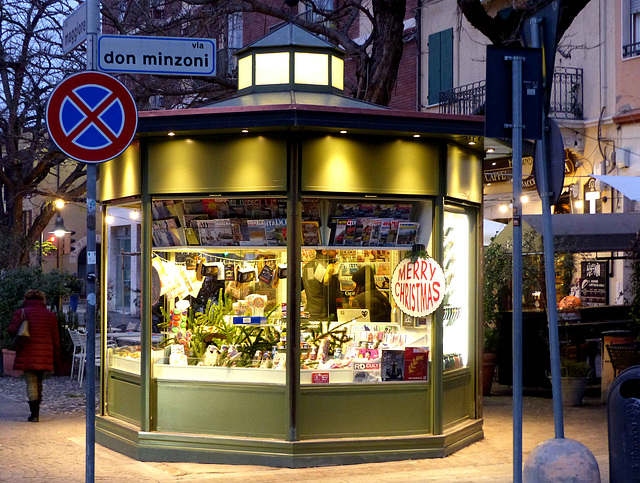Ravenna - Battistero Neoniano
Ravenna - Battistero Neoniano
Ravenna - Battistero Neoniano
Ravenna - Battistero Neoniano
Ravenna - Chiesa di Santa Giustina
Ravenna - Duomo
Ravenna - Duomo
Ravenna - Museo arcivescovile
Ravenna - Museo arcivescovile
Ravenna - Museo arcivescovile
Ravenna - Museo arcivescovile
Ravenna - Museo arcivescovile
Ravenna - Museo arcivescovile
Ravenna - Museo arcivescovile
Ravenna - Museo arcivescovile
Ravenna - Santa Maria del Suffragio
Ravenna - San Vitale
Ravenna - Basilica di Sant'Apollinare in Classe
Ravenna - Basilica di Sant'Apollinare in Classe
Ravenna - Basilica di Sant'Apollinare in Classe
Ravenna - Basilica di Sant'Apollinare in Classe
Ravenna - Basilica di Sant'Apollinare in Classe
Ravenna - Basilica di Sant'Apollinare in Classe
Ravenna - Torre Civica
Ferrara - Museo della Cattedrale
Ferrara - Museo della Cattedrale
Ferrara - Museo della Cattedrale
Ferrara - Museo della Cattedrale
Ferrara - Museo della Cattedrale
Ferrara - Museo della Cattedrale
Ferrara - Museo della Cattedrale
Ferrara - Museo della Cattedrale
Ferrara - Museo della Cattedrale
Ferrara - Museo della Cattedrale
Ferrara - Mercato coperto di Santo Stefano
Ferrara - Girolamo Savonarola
Ferrara - Cattedrale di San Giorgio
Ferrara - Cattedrale di San Giorgio
Ferrara - Cattedrale di San Giorgio (PiP)
Ferrara - Tabaccheria Garibaldi
Ferrara - Chiesa di San Giuliano
Ferrara - Chiesa di San Giuliano
Ferrara - Poste e Telegrafi
Ferrara - Castello Estense
Ferrara - Castello Estense
Location
Lat, Lng:
You can copy the above to your favourite mapping app.
Address: unknown
You can copy the above to your favourite mapping app.
Address: unknown
Keywords
Authorizations, license
-
Visible by: Everyone -
All rights reserved
-
107 visits
Ravenna - Kiosk


In Roman times Ravenna was a lagoon city surrounded by water, with at times up to 50.000 inhabitants. The second largest naval base of the Roman Empire was located here.
In the late 5th century, Roman authority in the West dissolved, and Romulus Augustulus was deposed by the general Odoacer in 476. Odoacer ruled as king of Italy for 13 years, but in 489 the eastern emperor Zeno sent the Ostrogoth king Theoderic to reconquer Italy. After losing the Battle of Verona, Odoacer retreated to Ravenna, where he withstood a three-year siege. In 493, Theoderic finally took Ravenna and supposedly killed Odoacer with his own hands. Ravenna became the capital of the Ostrogothic kingdom in Italy.
Theodoric died in 526 and various Ostrogothic military leaders took the Kingdom of Italy, but none was really successful. Meanwhile, the Byzantine Emperor Justinian I opposed both Ostrogoth rule. In 535 his general Belisarius invaded Italy and in 540 conquered Ravenna. After the conquest of Italy was completed in 554, Ravenna became the seat of the Byzantine government in Italy. Under Byzantine rule, the archbishop of the Archdiocese of Ravenna held second place in Italy after the pope and played an important role during this period.
In 751 Lombard king, Aistulf conquered Ravenna, thus ending Byzantine rule in northern Italy. King Pepin of the Franks attacked the Lombards and Ravenna gradually came under the direct authority of the Popes. Pope Adrian I authorized Charlemagne to take away anything from Ravenna that he liked, and Roman columns, mosaics, statues, and other portable items were taken north to enrich his capital of Aachen.
In 1198 Ravenna led a league of Romagna cities against the Emperor. After the war of 1218, the Traversari family was able to impose its rule in the city, but after a short period, Ravenna was returned to the Papal States in 1248 and again to the Traversari until 1275. One of the most illustrious residents of Ravenna at this time was the exiled Florentine poet Dante. In 1441 the city was annexed to the Venetian territories.
Kiosk
In the late 5th century, Roman authority in the West dissolved, and Romulus Augustulus was deposed by the general Odoacer in 476. Odoacer ruled as king of Italy for 13 years, but in 489 the eastern emperor Zeno sent the Ostrogoth king Theoderic to reconquer Italy. After losing the Battle of Verona, Odoacer retreated to Ravenna, where he withstood a three-year siege. In 493, Theoderic finally took Ravenna and supposedly killed Odoacer with his own hands. Ravenna became the capital of the Ostrogothic kingdom in Italy.
Theodoric died in 526 and various Ostrogothic military leaders took the Kingdom of Italy, but none was really successful. Meanwhile, the Byzantine Emperor Justinian I opposed both Ostrogoth rule. In 535 his general Belisarius invaded Italy and in 540 conquered Ravenna. After the conquest of Italy was completed in 554, Ravenna became the seat of the Byzantine government in Italy. Under Byzantine rule, the archbishop of the Archdiocese of Ravenna held second place in Italy after the pope and played an important role during this period.
In 751 Lombard king, Aistulf conquered Ravenna, thus ending Byzantine rule in northern Italy. King Pepin of the Franks attacked the Lombards and Ravenna gradually came under the direct authority of the Popes. Pope Adrian I authorized Charlemagne to take away anything from Ravenna that he liked, and Roman columns, mosaics, statues, and other portable items were taken north to enrich his capital of Aachen.
In 1198 Ravenna led a league of Romagna cities against the Emperor. After the war of 1218, the Traversari family was able to impose its rule in the city, but after a short period, Ravenna was returned to the Papal States in 1248 and again to the Traversari until 1275. One of the most illustrious residents of Ravenna at this time was the exiled Florentine poet Dante. In 1441 the city was annexed to the Venetian territories.
Kiosk
- Keyboard shortcuts:
Jump to top
RSS feed- Latest comments - Subscribe to the comment feeds of this photo
- ipernity © 2007-2025
- Help & Contact
|
Club news
|
About ipernity
|
History |
ipernity Club & Prices |
Guide of good conduct
Donate | Group guidelines | Privacy policy | Terms of use | Statutes | In memoria -
Facebook
X

Sign-in to write a comment.